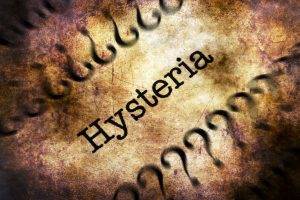Racism, Moral Panics, and Drug War Casualties: An Update
6/6/2019
 alexskopie
alexskopie
Surging cocaine use and new patterns of cocaine use in the 1980s and early 1990s in the United States sparked media and political frenzies. At the center of what sociologists have christened a moral panic was the iconic image of "crack babies" and "crack kids"--infants and children branded a "biological underclass" whose parents were portrayed as irretrievably depraved. Such images spurred a wave of laws and policies that in turn fueled dramatic expansions of the U.S. criminal justice and child welfare systems. Those most dramatically affected by these expansions were poor communities of color who witnessed unprecedented numbers of their young men imprisoned and their young women and children placed under the control of state child protection authorities. In the aftermath, countless individuals faced restrictions on access to housing, education and training, employment, food stamps, and basic voting rights. But most importantly, a population of mislabeled children reaped the consequence of low expectations, mothers faced social shame and loss of their children (sometimes from nothing more than false drug tests), and families were damaged in a pattern not unlike that which occurred in the era of the Indian boarding schools.
New "cocaine experts" rode the crest of this moral panic, warning from every media venue that an "epidemic" of cocaine-exposed infants was creating a "lost generation" devastated by the havoc prenatal cocaine exposure was inflicting on their development. There was just one problem: those claimed effects and those dire predictions related to prenatal cocaine exposure, based on studies now viewed as "junk science", were simply wrong. Well-designed studies challenged and then discredited all of the prevailing wisdom on prenatal cocaine exposure. When the inflammatory rhetoric of "crack babies" and "crack kids" peaked, virtually every mainstream media outlet spewed this flawed junk science in front page articles and television specials. Later retractions of those flawed findings rarely reached cultural visibility. (The latest mea culpa is an opinion piece from the Editorial Board of The New York Times entitled Slandering the Unborn.) This era illustrates how racism, bad science, moral crusaders, and desire for institutional expansion can collide to inflict untold damage on multiple parties.
I wish to raise two issues related to this era of history. The first is the question of the ethical and moral responsibility of multiple parties to make amends to the individuals, families, and communities harmed by these actions. If industries have a responsibility for harm that results from their products or services (such as the liability of the tobacco and pharmaceutical industries for their role in nicotine and opioid addiction), then two questions follow: 1) What is the responsibility of those who were at the core of what is now realized to be an extremely harmful disinformation campaign, and 2) What are the responsibilities of those persons and institutions who supported and profited from the laws and policies linked to a perceived cocaine epidemic? In both cases, the question is whether reparations are due to the individuals, families and communities who bore the brunt of those laws and policies. When do scientists, politicians, moral crusaders, educators, criminal justice and child welfare leaders, and health care professionals (including addiction treatment professionals) publicly declare their role in such harm and state what actions they are taking to make amends for such injuries?
The second issue is how frontline addiction professionals and recovery support specialists can avoid complicity when such moral panics rise within the culture. I would offer the following suggestions.
- Recognize the existence of moral panics related to new drug trends and maintain a healthy skepticism of all alarmist information being promoted during such periods--even when it seems to come from credible sources. Information emanating from the earliest stages of moral panics is notoriously unreliable. The objective voice that will stand the test of time is the one least likely to be heard at the height of a moral panic.
- The fact that a piece of information has been published in a scientific or professional journal does not in itself mean that this information has been scientifically validated. Early reports may not hold up to more methodologically rigorous studies. The way of science is that all knowledge is on probation pending further investigation and new discoveries.
- When you find you have been an accomplice in the dissemination of misinformation, do everything you can to correct what you have disseminated and correct it within the specific venues in which it was originally presented. Remember, those you originally communicated with may be continuing to act on the misinformation you provided; harm may be continuing to unfold. Consider this correction process a highly ethical form of professional amends.
- When alarmist voices are fanning the flames of cultural hysteria (often in pursuit of their own personal or institutional interests), bring your professional calmness to bear on this situation by tempering calls to impulsive action with more reasoned approaches to problem assessment and problem resolution. Always ask, "Are there any unintended consequences that could flow from what is being proposed?" A long tradition of harm in the name of help exists within the histories of addiction treatment and recovery support. One of the major goals of our professional careers should be to avoid to the greatest extent possible participating in this tradition.
- Moral panics have a way of turning people into objects that need to be extruded from the life of the community. In this climate, awful things can be perpetrated in the name of the most noble of values. Protest any emerging labels that turn people into things. As my friend Don Coyhis often reminds us: Words are important. If you want to care for something, you call it aflower; if you want to kill something, you call it a weed.